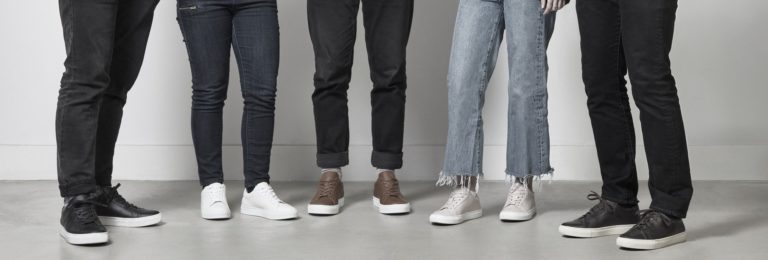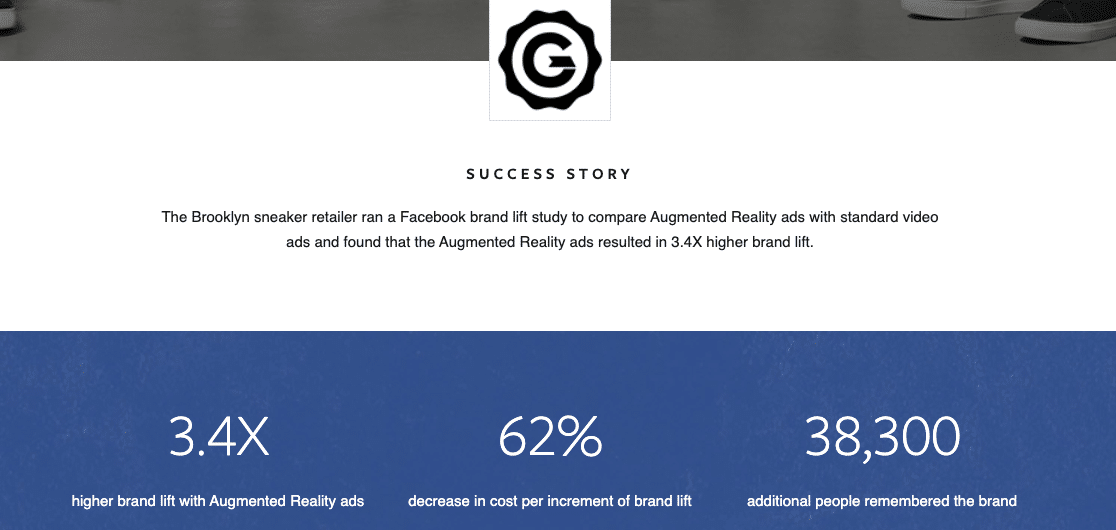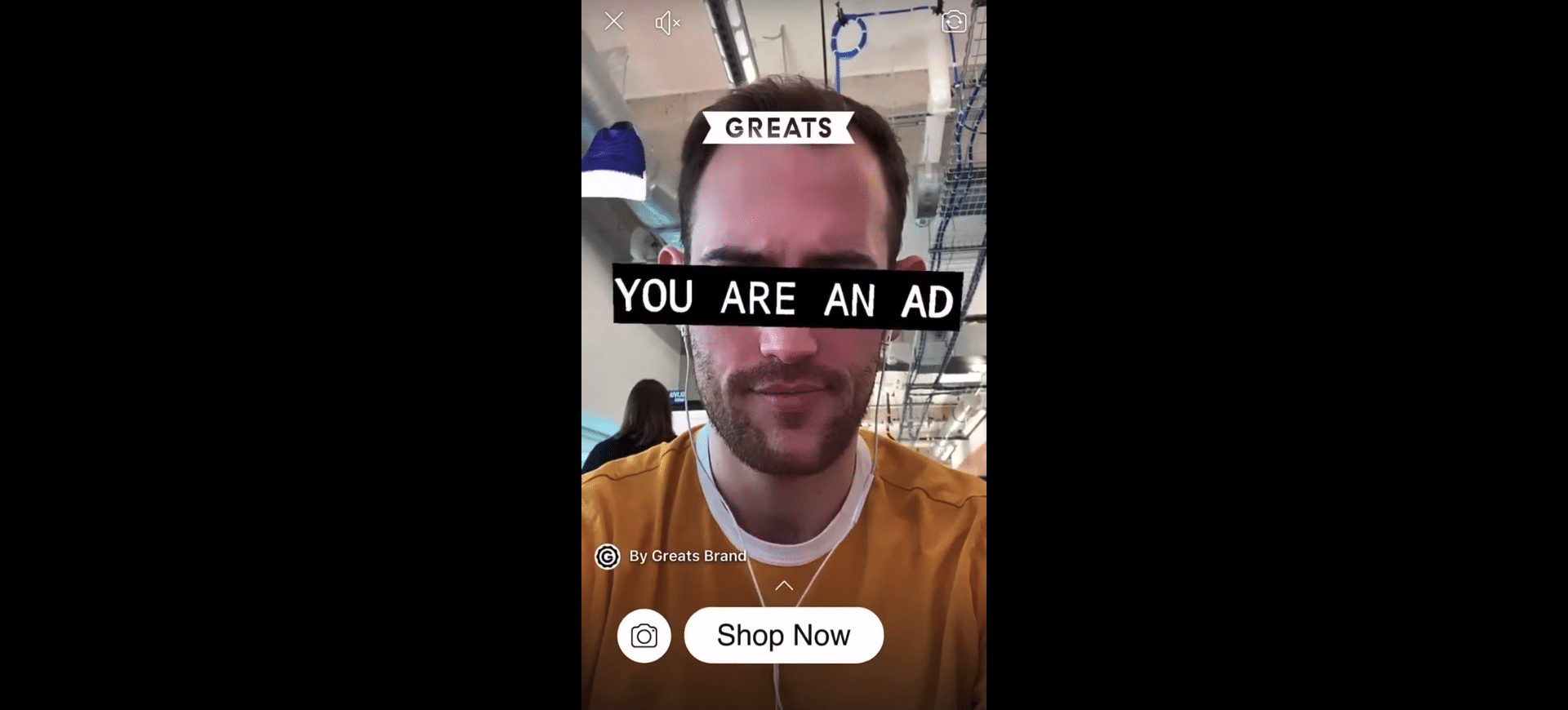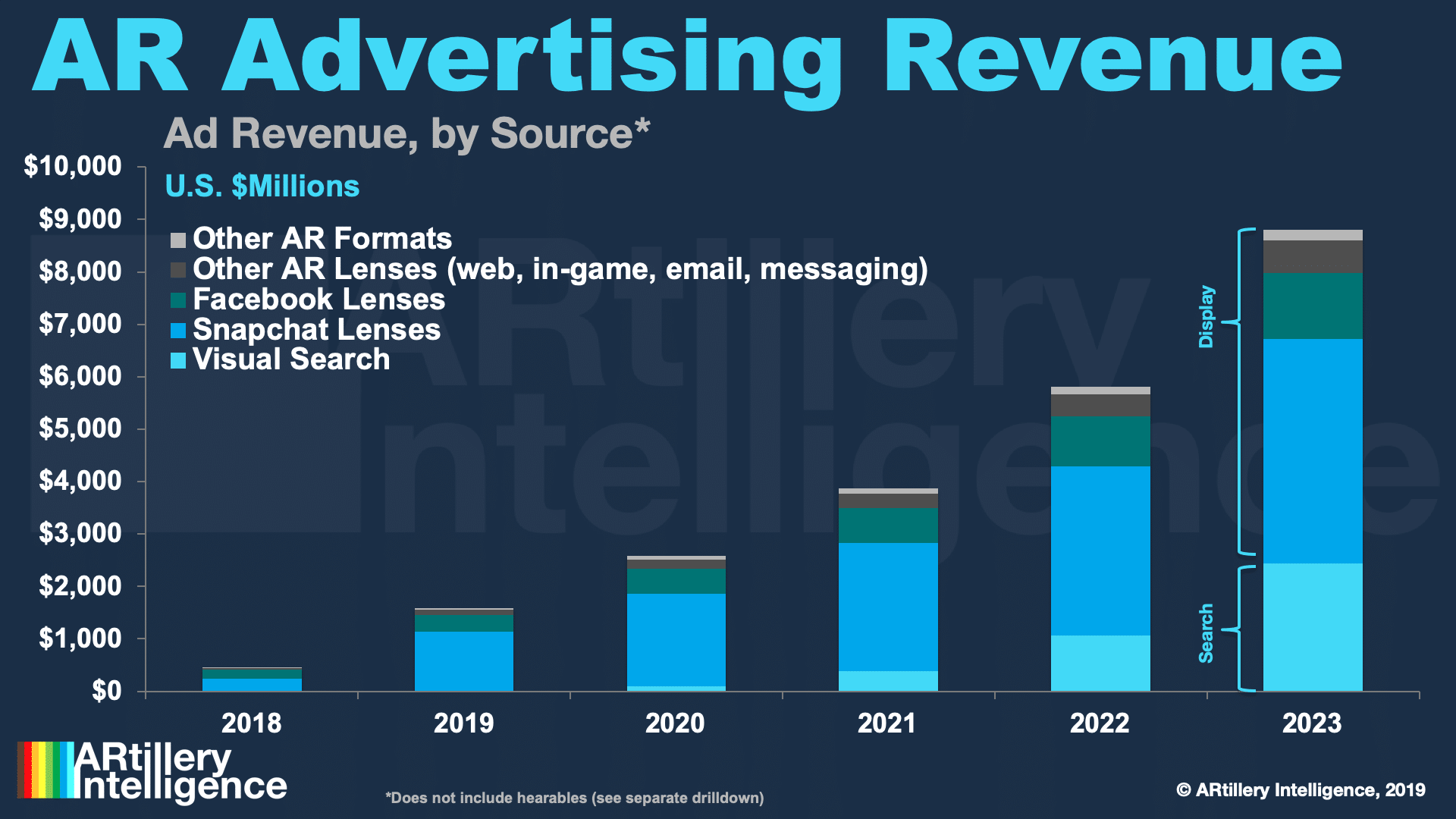
This is the latest in AR Insider’s Campaign Tracker series. Running semi-weekly, it examines marketing campaigns that utilize AR visualization such as product try-ons, and their results. For a full list of campaigns, comparative ROI chart and deeper analysis, subscribe to ARtillery PRO.
Proof points continue to roll out for AR’s effectiveness as an advertising medium. Early-adopter brands are learning that AR lets them demonstrate products in immersive ways. That can include brand engagement (upper-funnel) or “try before you buy” (lower-funnel) visualization.
More evidence from the upper-funnel side of the AR ad spectrum comes from Brooklyn-based sneaker retailer GREATS. Through an AR lens campaign on Facebook, the company achieved a meaningful 3.4x brand lift compared to its campaign benchmark of standard video ads.
In absolute terms, that brand lift equates to 38,300 additional people who remembered the brand after experiencing the lens. This is known in the advertising analytics world as brand recall — a key metric for awareness-based advertising. AR continues to show efficacy on this front.
This has a lot to do AR’s inherent levels of immersive engagement that can create a lasting impact on memory. In a recent study published by Zappar and Neuro-Insight, it was demonstrated that AR can achieve 70 percent greater memory encoding than non-AR media.

This is an AR Ad…
So what were the qualities of the campaign itself? GREATS was interested in cultivating more brand awareness and fans of its handmade full-grain leather shoes. The experimental company chose Facebook AR lenses along with video ads that carried the same creative concept.
The multi-platform approach not only allowed it to reach more users, but to compare results and see AR’s impact. It also gave AR a delivery vehicle and launch point, as activations happened as an optional engagement on the brand’s videos, distributed on Facebook’s News Feed.
Once the front-facing camera was activated in this way, selfie overlays carried the campaign’s creative concept of a cheeky and self-referential “This is an AR ad” message. Users could play with animations that reacted to their facial expressions (image below and video here).
News Feed placement was based on demographic targeting for GREATS’ highest lifetime-value customers. This is known as lookalike targeting — zeroing in on demographics in one channel (in this case, Facebook) — that represent groups with proven brand loyalty from other channels.

Proof Points
Along with the above metrics, GREATS’ shoe campaign was able to achieve a 62 percent reduction in cost per increment of brand lift. So not only did it help the brand achieve greater brand recall, but it did so in a way that was more cost-efficient than other digital media like video.
These strengths as a branding and awareness medium are coupled with AR’s capacity (shown elsewhere) to drive conversions through product try-ons. This traces back to our longstanding assertion that AR ads have the ability to span the purchase funnel from impression to action.
This ability to combine reach with high engagement is somewhat rare among ad media. The inherently-social attributes also propel distribution through virality. But despite these attributes, there’s doubt among brand advertisers, meaning more education and proof points are needed.
That adoption will cycle into the relatively laggard and comfort-zone bound Madison Avenue, just as it did for mobile advertising. This is happening to the tune of $1.5 billion in AR ad revenue last year according to our research arm ARtillery Intelligence, on pace for $8.8 billion by 2023.

In Perspective
The above projections have a high growth rate, starting from such a small base. But to put it further in perspective, $8.8 billion is 1.4 percent of the $620 billion global ad spend. So though AR advertising is showing strong signs, it has a long way to go in terms of relative spend.
Throughout this evolution, one thing we’ll see is AR campaign best practices and standards develop. There’s still much innovation to come around creative applications of the underlying technology to build compelling ad experiences. Think of it like mobile advertising in 2010.
In the same sense, one historical lesson is to avoid the fate of those who were late to mobile advertising. Those who jumped at mobile early conversely developed a competitive edge. Consumer brands, if fitting to the medium, should start to build an AR knowledge base.
We’ll be back with more AR commerce proof points and takeaways in our Campaign Tracker series. There will be lots to watch and internalize as AR commerce evolves quickly from early and experimental stages to a firmer set of strategies around UX, user targeting, and distribution.
